5 Ways to Improve Your Balance to Stay Forever Young
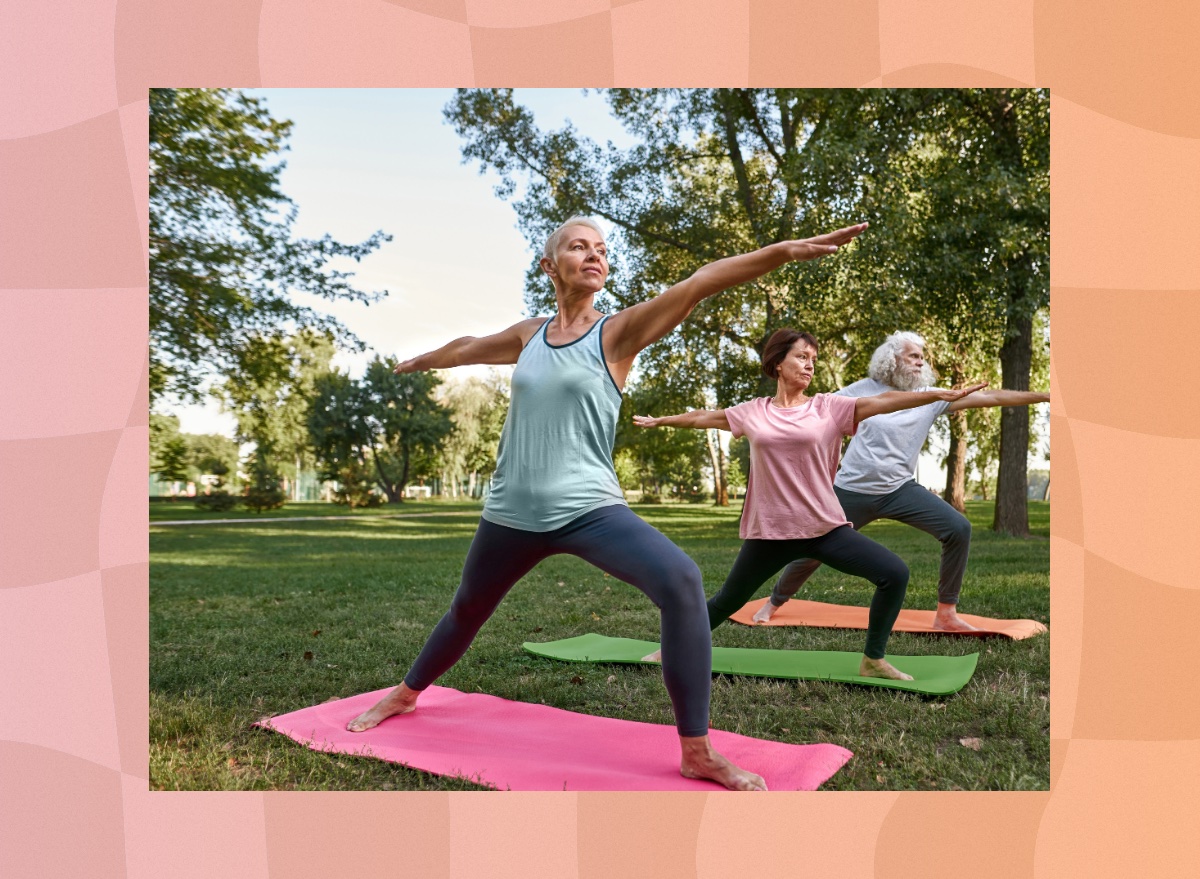
Good balance means maintaining agility, physical fitness, and an independent lifestyle as you age. It's essential for preventing falls, which are the main cause of injury among adults in the 65-and-up age group. In fact, more than 14 million older adults experience falls each year. That's why we chatted with experts to learn the best ways to improve your balance to keep your body young, fit, and resilient.
Preserving and building on your balance promotes overall health and longevity. "Falls are the number one cause of injury deaths, [hospitalizations], and emergency department visits in America," explains Thomas Olsen, a physiotherapist with EmbdyHealth Pty Ltd. "As you can probably guess, reduced balance leads to many of these falls. Strengthening and focussing on balance ensures that we are able to live a happy, healthy life and continue completely independently as we age."
To get you moving in the right direction, we have the best ways to improve your balance and remain forever young.
Table of Contents
Backward Walking
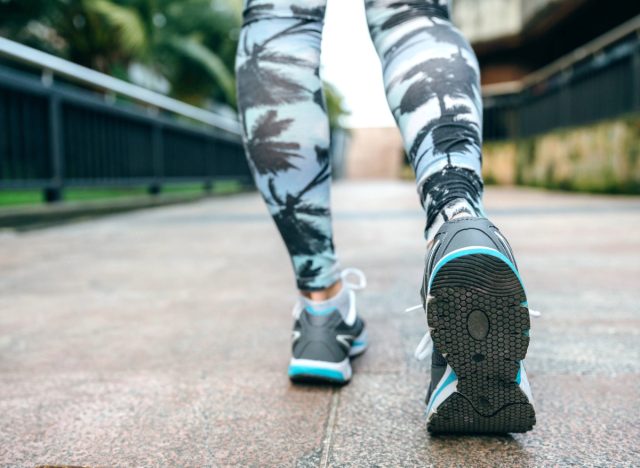
Walking backward, also known as "retro walking," is chock-full of benefits—especially for those looking to improve their balance and posture.
"Walking backward helps with balance as your body doesn't have all of the regular input from the systems of the body," Olsen tells us. "For example, the visual system and the vestibular system (the inner ear system that helps us balance) have to work differently, which makes us focus more and work harder in order to balance."
Engaging in backward walking for three minutes each day can help preserve your balance.
Yoga and Pilates
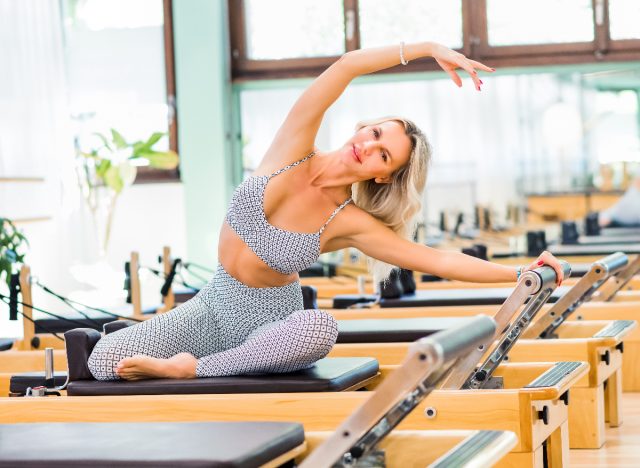
Pilates and yoga are both stellar forms of exercise that can greatly enhance your balance. They do so by boosting the strength of your legs and core, which are two essential assets to balance maintenance.
"Yoga and Pilates are also great at relaxing the body and mind, which keep you stress-free and youthful," Olsen adds. "Doing this one to two times weekly will greatly improve your balance."
Core-Strengthening Exercises
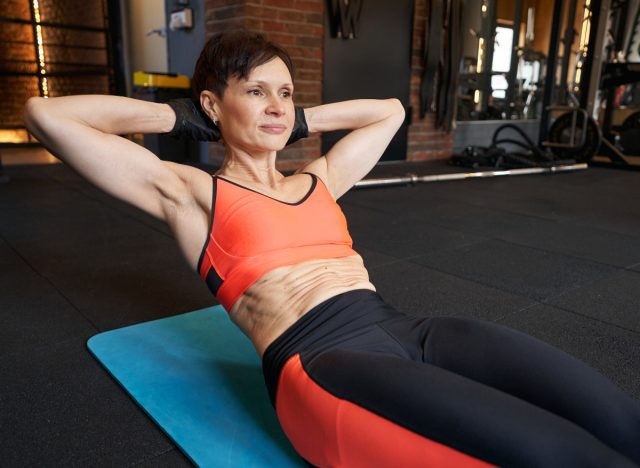
Improving and maintaining your core strength is key as you grow older, as its job is to keep your body still and prevent your upper body from swaying.
"Some great, common core strengthening exercises include a plank and sit-ups. Another exercise that can work both your core and your legs includes a wall sit," Olsen suggests. "Doing these exercises for three sets of 30 once a day is a great way to improve core strength."
Daily Walking
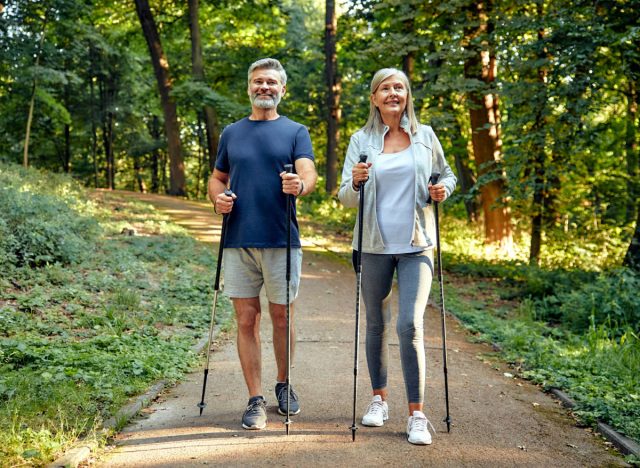
Embarking on a good old-fashioned walk works wonders for the mind, body, and soul. All you need are a solid pair of walking shoes and a good route, and you're set to go!
"Gone are the times when professionals recommended 10,000 steps every day. Now, experts say you can reap all the benefits you need from walking 7,500 steps [daily]," explains Devin Trachman, PT, DPT, MTC, clinic director and physical therapist at Physical Therapy Central. "That can be three to five 10-minute walks a day. The speed doesn't matter; it's just the count of the steps. By meeting this goal, seniors can reduce their [mortality risk], improve cardiovascular health, lower cholesterol, improve cognition, and prevent muscle loss in the legs."
Heel-Toe Walks
Heel-to-toe walking requires you to place one foot directly in front of the other as you walk, putting your balance to the test.
"This is going to increase your balance as it reduces your base of support because your feet aren't close to shoulder width like they generally would be when walking," says Olsen. "Doing this for three minutes a day is a great way to improve your balance."









